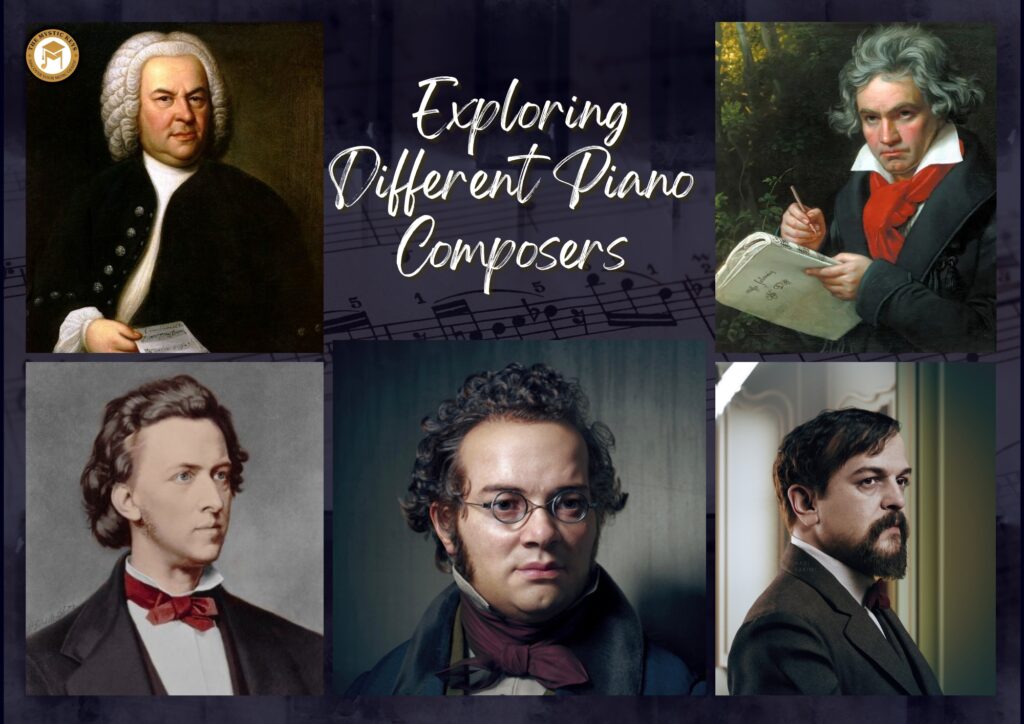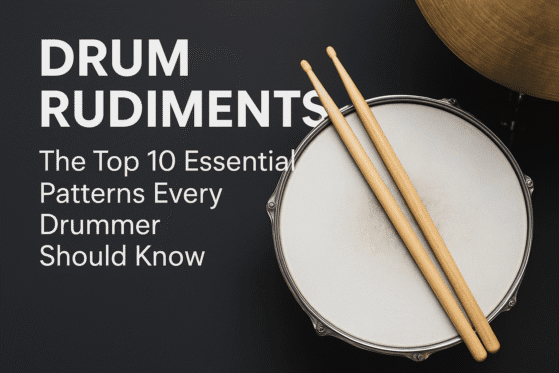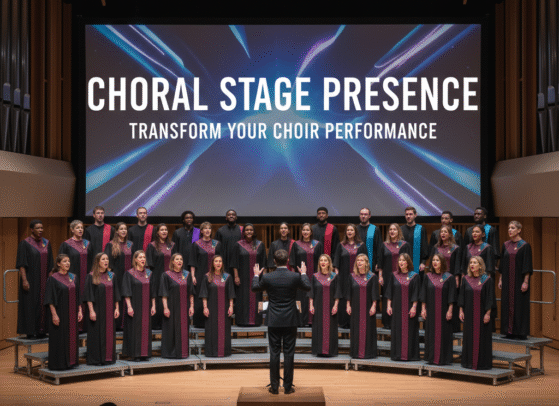Exploring Different Piano Composers | From Bach to Debussy
The piano has a rich history, central to Western classical music. Legendary piano composers shaped its evolution over time. From the Baroque to the Romantic and Impressionist periods, composers like Bach, Beethoven, Schubert, Chopin, and Debussy revolutionized the piano, both technically and emotionally.
In this blog, we will explore the piano’s evolution through key piano composers. Each brought unique innovations, expanding the instrument’s possibilities. Bach, for instance, introduced intricate counterpoint, while Debussy created atmospheric textures. These contributions pushed the piano to new limits.
As we examine their works, we see how these piano composers influenced the instrument’s technical and emotional range. Bach’s focus on form set the foundation for later developments. Beethoven pushed boundaries with dramatic expression, while Schubert introduced lyrical melodies. Chopin’s emotional depth and Debussy’s color further transformed the piano.
By studying their music, we understand how these piano composers shaped piano playing today. Their legacies continue to inspire pianists, highlighting the piano’s growth as a dynamic and expressive instrument.
Johann Sebastian Bach (1685–1750) | The Foundation of Western Classical Music
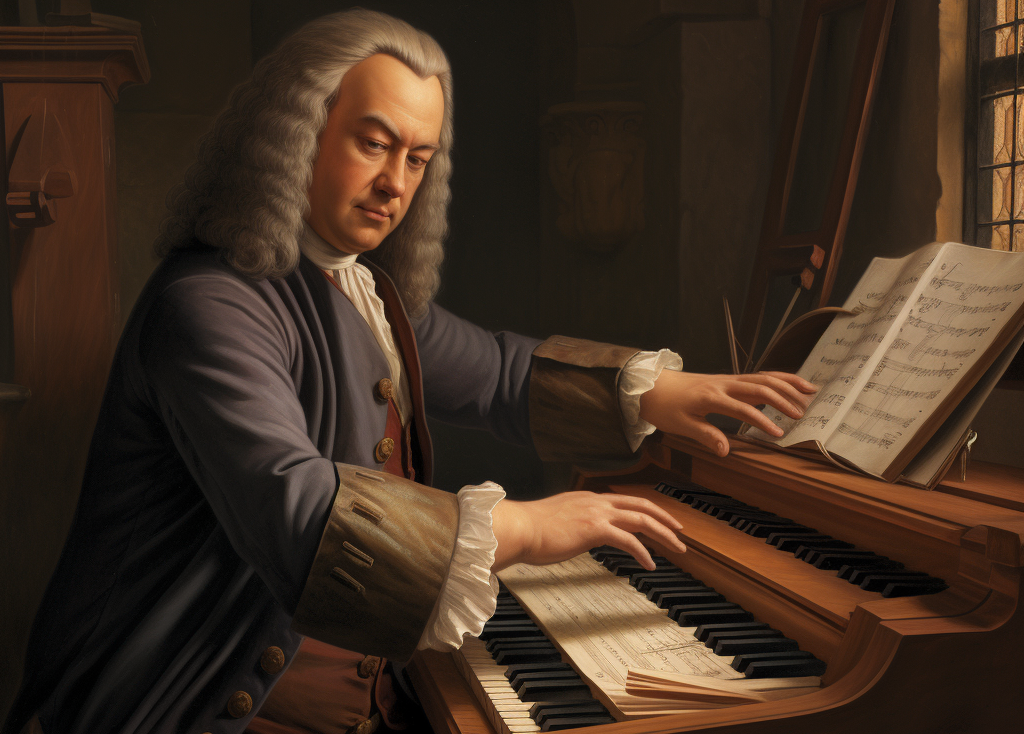
Bach is often called the father of Western classical music. He laid the foundation for future music with his mastery of harmony, counterpoint, and structure. His compositions, rich in counterpoint and harmonic depth, influenced generations of composers.
One of his most important works, Well-Tempered Clavier, consists of preludes and fugues that remain a cornerstone of piano music. This groundbreaking work uses all 24 major and minor keys, showcasing Bach’s extraordinary mastery of tonal harmony. Pianists find these pieces challenging but rewarding as they explore the potential of each key.
Bach’s music is rooted in the Baroque style, which is known for its ornamentation, complex counterpoint, and strict form. Although his piano works may seem difficult at first, careful study reveals their depth. Pieces like the Inventions and Sinfonias highlight Bach’s ability to weave independent melodic lines that blend seamlessly.
His talent for intertwining multiple voices in a single composition remains unmatched. Bach’s works are a testament to his technical brilliance and creativity. While challenging, his music offers rich rewards for pianists willing to explore its layers. Moreover, his influence extends far beyond his era, inspiring countless composers and musicians. Today, Bach’s music continues to inspire and challenge pianists around the world.
Ludwig van Beethoven (1770–1827) | The Bridge Between Classical and Romantic Music
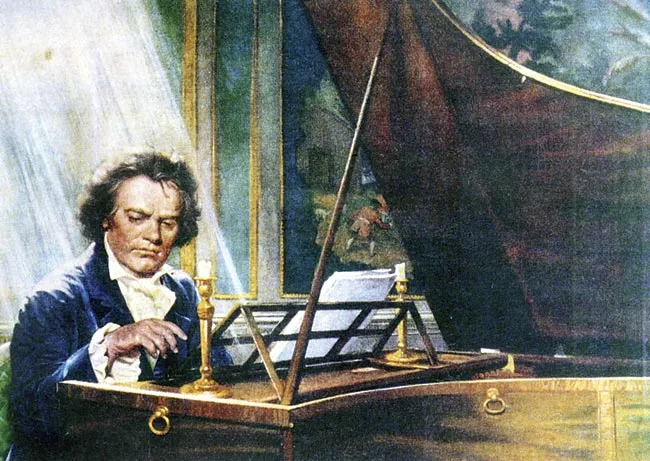
Beethoven’s impact on the development of piano music cannot be overstated. His works bridged the Classical and Romantic periods, evolving the rigid formal structures of the Classical era into a more expressive and emotionally intense language. His compositions pushed the boundaries of the piano, incorporating dynamic contrasts, larger ranges, and more complex harmonies.
Beethoven’s Piano Sonatas are considered some of the most important works in the piano canon. His early sonatas, such as Sonata No. 8 in C minor, Op. 13 (“Pathétique”), are rooted in the Classical tradition, adhering to formal structures established by composers like Haydn and Mozart. However, as Beethoven’s style matured, his sonatas began to feature more emotional depth and experimentation, as seen in works like Sonata No. 23 in F minor, Op. 57 (“Appassionata”), and Sonata No. 29 in B-flat major, Op. 106 (“Hammerklavier”).
The Hammerklavier Sonata is particularly notable for its technical challenges and its expansion of the piano’s expressive range. Beethoven’s ability to convey profound emotion through the piano was a hallmark of his work and became a defining characteristic of the Romantic movement. His piano music laid the groundwork for later composers, inspiring them to explore new techniques, emotional expression, and technical innovation.
Franz Schubert (1797–1828) | The Lyrical Poet of the Piano
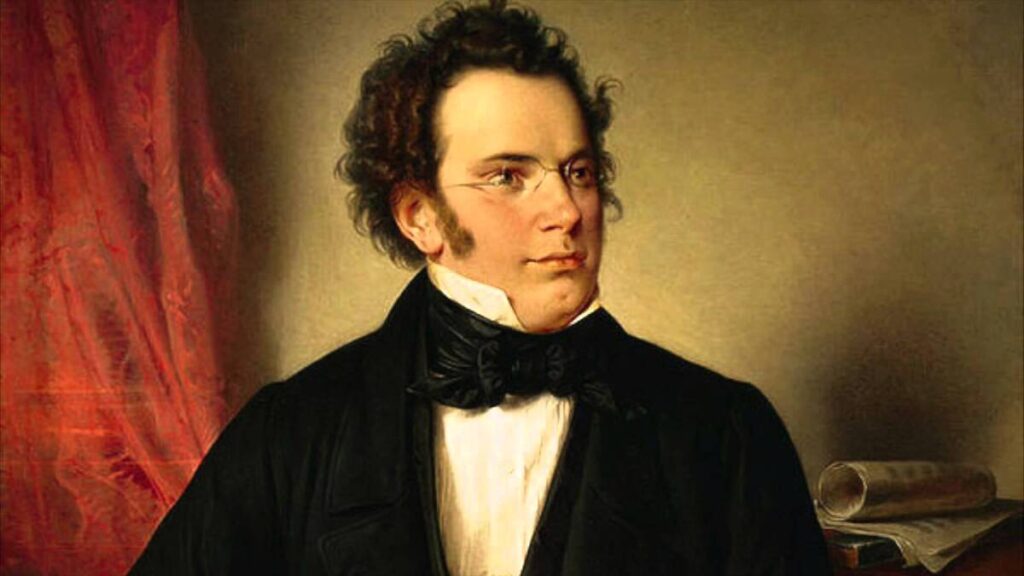
Schubert, primarily known for his vocal music, made significant contributions to the piano repertoire. His Impromptus, Moments Musicaux, and Sonata in B-flat major, D. 960 stand out as some of the most lyrical and emotionally rich works of the early 19th century. Schubert’s ability to infuse his music with lyricism, charm, and deep emotional resonance has made his works favorites among pianists and listeners alike.
His piano music often reflects the beauty and simplicity of his melodies, which convey a poetic and introspective quality. For instance, his Impromptus are rich with expressive phrasing and harmonic exploration. Unlike Beethoven’s dramatic and intense works, Schubert’s pieces tend to be more serene and flowing, showcasing his talent for melody and harmonic color.
This shift in style marked Schubert’s move away from the rigid structures of the Classical era toward a freer, more emotionally expressive approach. His music began to break the boundaries of classical form, focusing on narrative and emotional depth rather than strict formalism. This new direction paved the way for future Romantic composers, like Chopin and Liszt, who would go on to develop and expand these ideas.
As Schubert’s works evolved, they opened doors to more expansive forms and greater emotional expression, laying the foundation for the Romantic era. His contributions to piano music not only bridged the gap between Classical tradition and Romantic ideals but also brought a sense of freedom and fluidity to the piano, influencing generations of composers to come.
Frédéric Chopin (1810–1849) | The Poet of the Piano
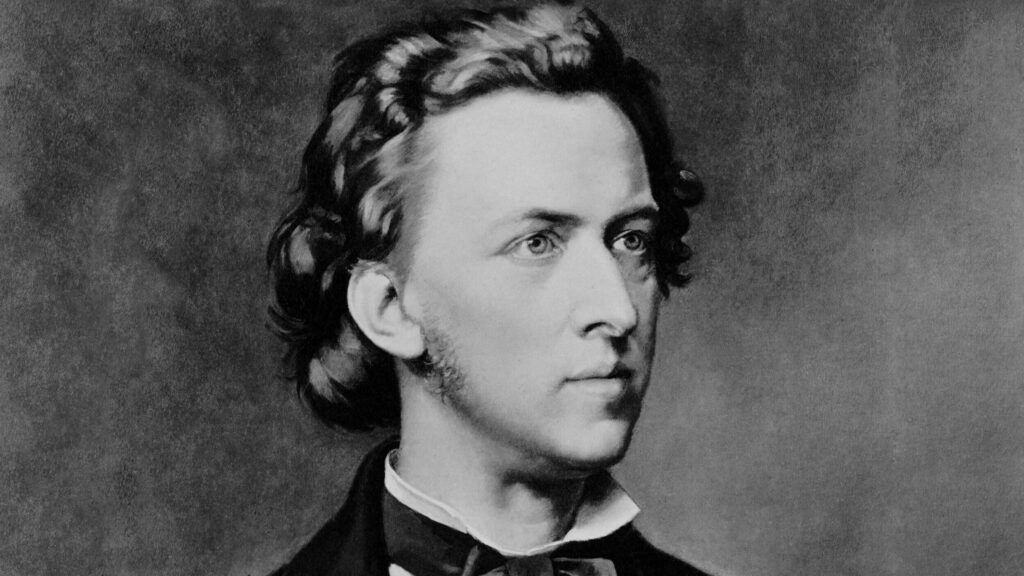
Chopin’s contributions to piano music are monumental. Known for his virtuosic technique and emotional depth, Chopin’s piano works pushed the boundaries of what was technically possible on the instrument while also introducing a new level of expressivity. His works are known for their lyrical beauty, intricate ornamentation, and delicate use of dynamics, offering both a challenge and a joy to pianists.
Chopin was a master of the Nocturne, Étude, Polonaise, Mazurka, and Waltz, all of which have become staples of the piano repertoire. His Études, particularly Op. 10 and Op. 25, are not only technical exercises but also deeply expressive works that demand a high level of musicality and virtuosity. The Nocturnes, on the other hand, are filled with poetic beauty and offer a window into Chopin’s deeply introspective and emotional character.
What sets Chopin apart from other composers is his use of rubato (flexible timing) and his development of new techniques that allowed for unprecedented expression on the piano. His music is deeply intertwined with the Romantic ideals of individualism and emotional expression, paving the way for later composers to experiment with form and harmony.
Claude Debussy (1862–1918) | The Impressionist Revolution
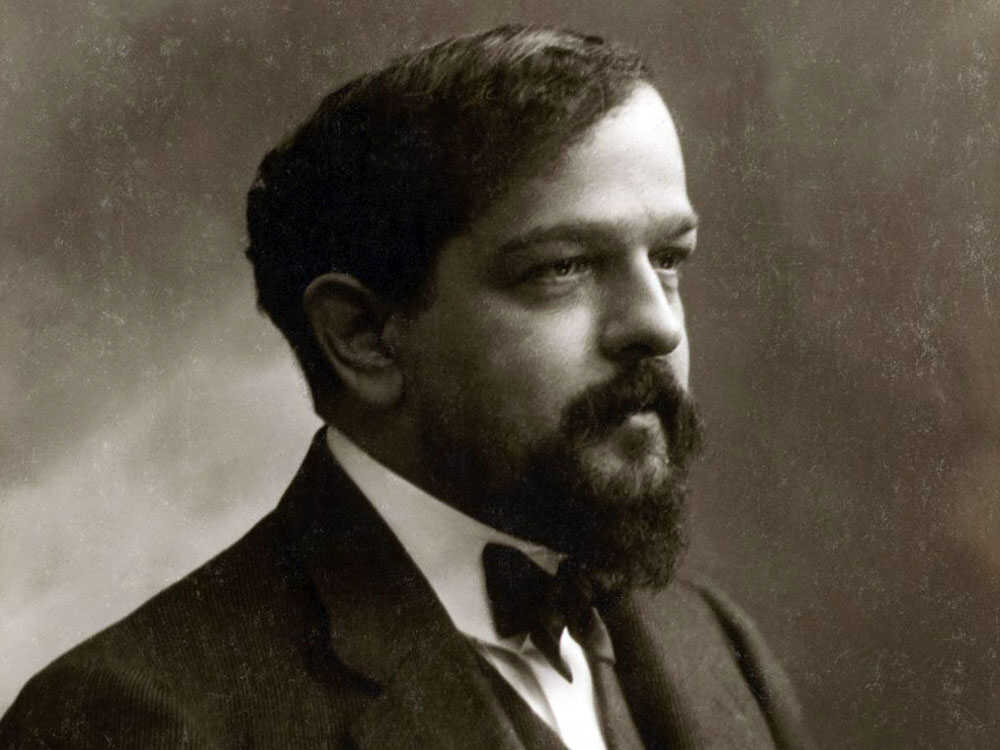
Debussy’s music represents a radical departure from the past, ushering in a new era of musical thinking. Often associated with the Impressionist movement (though he rejected the label), Debussy transformed piano music with his unconventional use of harmony, tone color, and form. His music is marked by fluidity, a lack of clear tonal resolution, and a focus on atmosphere rather than narrative structure.
Debussy’s Préludes, Arabesques, and Clair de Lune are some of his most famous piano works, each capturing a different facet of his unique style. His compositions are less about traditional harmonic progressions and more about creating moods and impressions through shifting tonalities and delicate textures. The Préludes, for example, are highly evocative, with titles like “The Sunken Cathedral” and “Footsteps in the Snow,” suggesting imagery without directly depicting it.
Debussy’s innovative use of the whole-tone scale, chromaticism, and his exploration of new voicings for the piano had a profound impact on 20th-century music. He broke away from traditional Western harmonic practices, embracing a more fluid, free-flowing musical language that would influence generations of composers, from Maurice Ravel to contemporary composers working in jazz and film music.
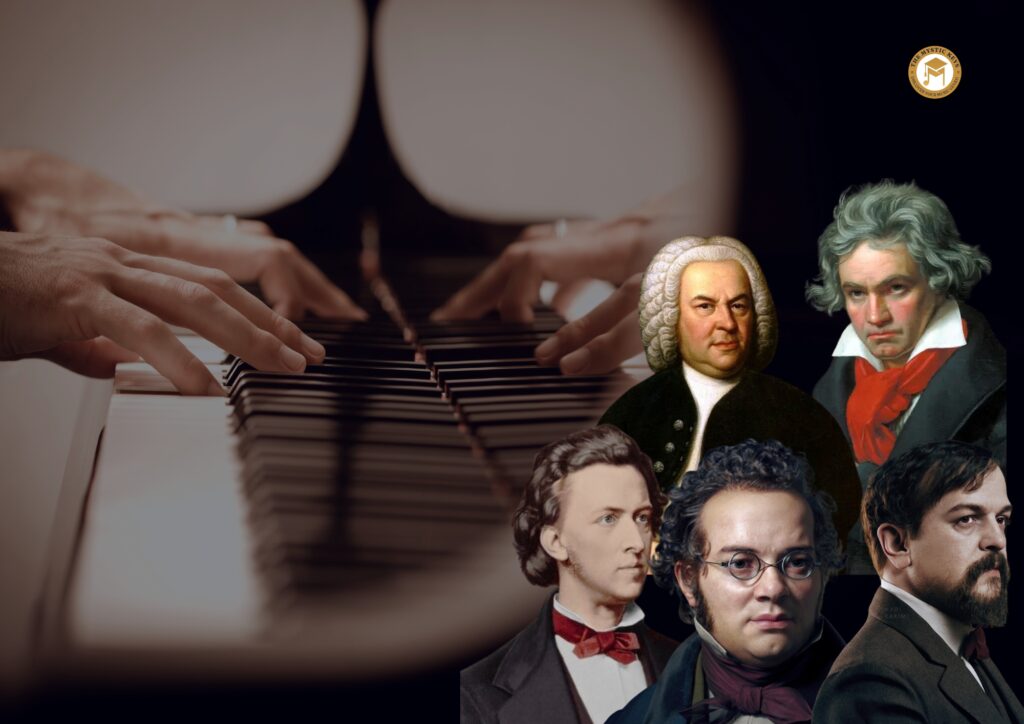
Conclusion | The Evolution of Piano Music
The piano’s evolution reflects Western classical music’s transformation. Each composer shaped the instrument, enhancing its technique and expression. Bach’s counterpoint set the foundation, while Beethoven expanded emotion and form. Schubert’s melodies bridged Classical and Romantic styles. Chopin’s virtuosity redefined the piano’s role in the 19th century. Liszt pushed technical limits with dazzling compositions, while Rachmaninoff infused Russian soul into his powerful works. Debussy’s Impressionism introduced new tonal colors and textures. Each composer brought fresh innovations, shaping the piano’s expressive possibilities. From structured fugues to dreamy soundscapes, the piano’s journey spans centuries. Their music continues to challenge and inspire pianists today.
Exploring these masterpieces not only deepens your understanding of the piano but also connects you to its rich history. As you listen or play, you experience the emotion, technique, and innovation that define these works. Their music continues to shape the way we appreciate the piano, enhancing its role as both an expressive and technical instrument. Their legacies live on, echoing through grand concert halls, timeless recordings, and the hands of aspiring musicians. Each composition carries the influence of the past while inspiring the future. The piano remains a timeless voice, evolving yet always rooted in the genius of these masters. Its melodies transcend generations, bridging tradition and modern interpretation. Ready to embark on your own musical journey? Join The Mystic Keys and learn from world-class instructors who bring these legendary compositions to life!
Related Blogs
Perfect Piano Posture & Hand Position | Play Comfortably and Efficiently
Playing the piano requires more than just pressing keys—it’s about achieving the perfect balance of relaxation and control. Your posture and hand position determine how efficiently you play, how well you avoid injury, and how easily you progress in technique.
How to Develop Finger Independence for Smooth Piano Playing
Developing finger independence is a cornerstone of proficient piano playing. It enables pianists to execute complex passages with precision, expressiveness, and fluidity.
Piano Practice Structure for Effective
Improvement
At The Mystic Keys, we believe that mastering the piano practice structure is a journey that combines passion, discipline, and the right guidance. Whether you’re a beginner or an advanced pianist, a structured practice routine is the cornerstone of progress.


